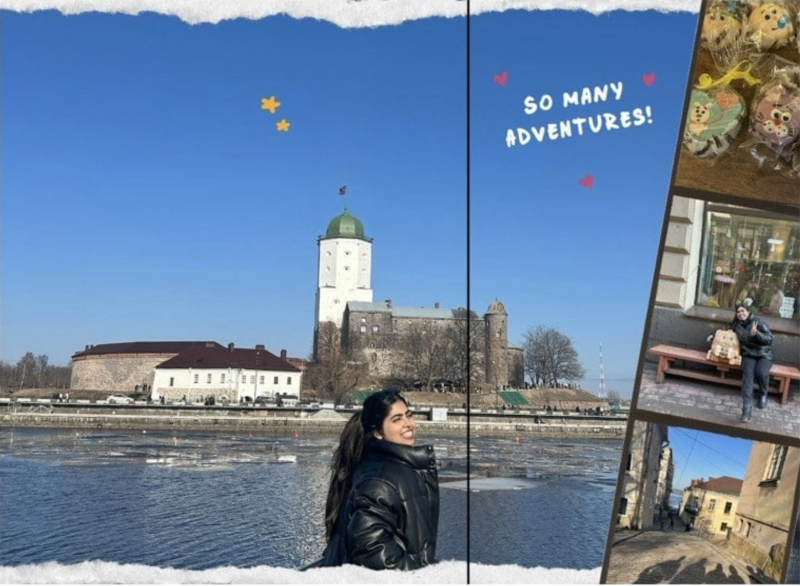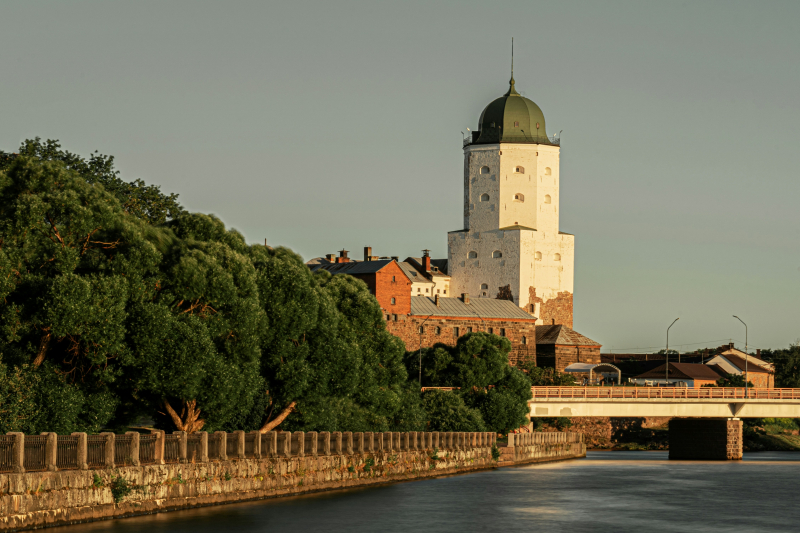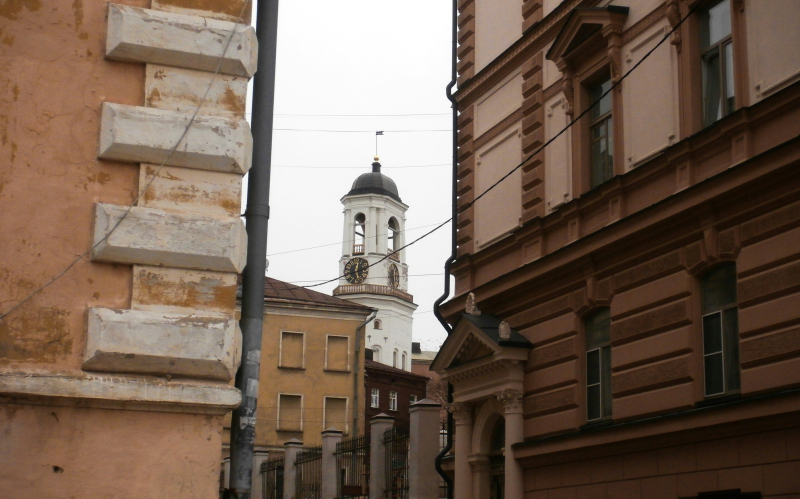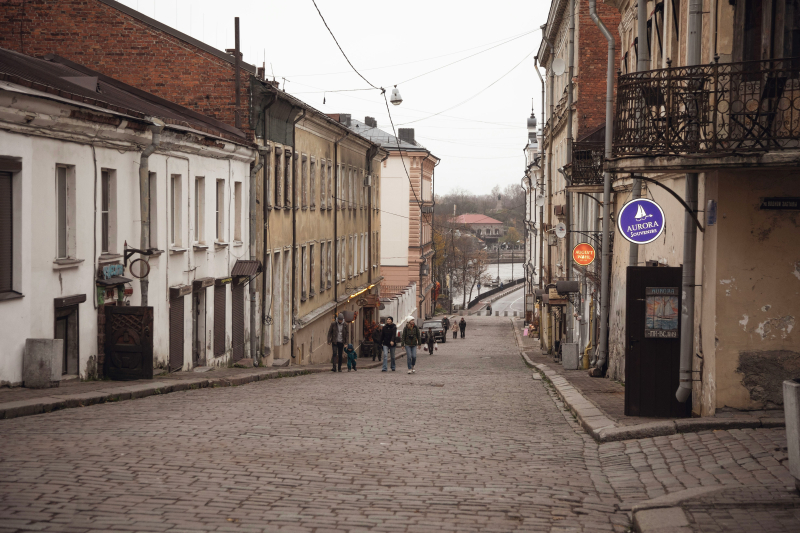Master's graduate, Business Transformation Strategies and Technologies
Vyborg Revisited: A Warm Sunny Escape From the City Life
Vyborg and I have a bit of history. This wasn’t my first or even my second visit — it was my third visit. And yet, each time I return, I find something new to love. Maybe, it’s the medieval charm, the peaceful walks, or simply the excuse to escape St. Petersburg’s rush. But this time, I had two things on my mind: finally getting my hands on krendels (Vyborg's famous baked treats) and soaking in the rare warmth of a +14 degrees Celsius spring morning.

For those unfamiliar, Vyborg is a small, historic town near the Russian-Finnish border, about 120 km from St. Petersburg. With its medieval castle, cobblestone streets, and Scandinavian influences, it feels like stepping into a different era. Originally founded by the Swedes in the 13th century, Vyborg has changed hands multiple times over the centuries, and its unique blend of Russian, Finnish, and European architecture makes it one of the most fascinating destinations near St. Petersburg.
For a final-year student juggling thesis deadlines, work, and responsibilities, a short break feels like a luxury. But as I walked through the quiet, cobbled streets, feeling the gentle spring sun on my face, I knew this trip was exactly what I needed.
Getting to Vyborg
Vyborg is easily accessible from St. Petersburg. Here’s how you can get there:
- By train: The Lastochka high-speed train from Finlyand Railway Station takes around 1 hour and 5 minutes. Tickets cost 400−500 rubles one way but if you are a student, you get a 50% discount on the train tickets by showing your student ID. The tickets can be booked online in advance or you can also buy them at the station. I have always taken a train to travel to Vyborg.
- By bus: Buses from Parnas or Devyatkino metro stations take around 2−2.5 hours and cost 300−400 rubles.
- By car: A two-hour drive via the Scandinavia Highway (A181) makes for a great road trip.
Documents to Carry
Since Vyborg is close to the Russian-Finnish border, be sure to carry:
- Passport with a valid registration (especially for international students and expats)
- Student ID (for potential discounts)
- Migration card (if applicable)
- Transport tickets (I prefer booking tickets in advance, even for the return journey)
When you arrive at the Vyborg railway station, don’t be surprised if the local police approach you for a routine check. If you have all your documents and tickets in order, it’s a quick 5−10- minutes conversation. In some cases, they may take a photograph. When this happened to us, the officer jokingly called herself our "personal photographer" before giving us friendly travel tips on how to explore Vyborg and get back to St. Petersburg in the evening. A funny, unexpected welcome to the town!
What to explore in Vyborg
- Vyborg Castle and St. Olaf’s Tower
Vyborg Castle, built by the Swedes in the 13th century, is the town’s most iconic landmark. Standing on a small island, it offers a glimpse into medieval history with its stone walls, old fortifications, and museum exhibits. The highlight of the castle is St. Olaf’s Tower, the tallest structure in Vyborg, which provides a breathtaking panoramic view of the town and the Gulf of Finland. Climbing to the top is a bit of workout, but the view makes it absolutely worth it.

-
Mon Repos park
A peaceful landscape park on the shores of the Gulf of Finland, Mon Repos (meaning "My Rest" in French) is a perfect escape into nature. The park is known for its picturesque walking rails, rocky cliffs, and wooden bridges, making it ideal for a quiet retreat.
-
Market Square and Round Tower
Vyborg’s Market Square is the heart of the town, buzzing with local vendors selling souvenirs, snacks, and traditional delicacies. Overlooking the square stands the Round Tower, a 16th century Swedish fortress, a historical site that has been repurposed as a cozy cafe. Once a part of Vyborg’s defensive system, the tower now invites visitors to step inside and experience a piece of medieval history while enjoying a warm meal.

-
Alvar Aalto Library
Designed by the famous Finnish architect Alvar Aalto, this library is a masterpiece of modernist architecture. With its clean lines, natural lighting, and innovative design, it stands in contrast to Vyborg’s medieval charm. For architecture lovers, the library is a must-visit, offering a glimpse into the functional Scandinavian design and its impact on public spaces.
-
Medieval streets and bakeries
Vyborg’s streets are a joy to explore. Every corner holds a piece of history, whether it’s a centuries-old doorway, a hidden archway, or a quiet square perfect for a photo.
And of course, no trip to Vyborg is complete without trying its famous krendels — sweet, spiced pastries with a crispy crust, and a soft, flavorful center. These traditional baked treats pair wonderfully with a warm cup of tea, making them the perfect snack after a long walk through the town.

Final thoughts
This trip was different. Maybe it was the nostalgia of returning, the bright sunny spring morning, or the simple joy of a well-earned break with friends. Walking through Vyborg’s streets, eating fresh krendels, and enjoying the quiet charm of the town reminded me that even in the busiest seasons of life, taking a step back is worth it.
If you ever feel overwhelmed with studies, work, or life in general, Vyborg might just be a perfect escape.
Thank you so much for reading! Feedback is always appreciated.
